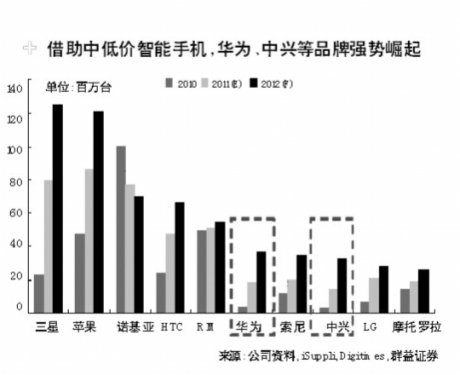Super Silent Perkins Diesel Generator Perkins Genset,Super Silent Perkins Diesel Generator,Perkins Silent Diesel Generator,200Kva Super Silent Generator Perkins Jiangsu Lingyu Generator CO.,LTD , https://www.lygenset.com For smart phone chip leader Qualcomm, the next two years, its days may not be too good, because Intel, Nvidia (NVIDIA) and other strong competitors are stepping up efforts to grab the Qualcomm site.
For smart phone chip leader Qualcomm, the next two years, its days may not be too good, because Intel, Nvidia (NVIDIA) and other strong competitors are stepping up efforts to grab the Qualcomm site.
In the ongoing MWC (M obileWorldCovergress World Communications Conference), Intel C EO Otellini announced that O range, ZTE, and Lava, a low-cost mobile phone manufacturer in India, have joined the two major customers of Motorola Mobile and Lenovo. The Intel smartphone camp will launch the Z2000 platform for smartphones priced below $150 in early next year. Another chip giant, Nvidia, is also working hard to break into the thousands (RMB) smartphone market.
The two major chip giants continue to compete for Qualcomm's customers and prepare to enter into the low-priced smartphone market with a price of 1,000 yuan (RMB). This will inevitably push down the price of mid-to-high-end smartphones. People in the industry are paying close attention to how Intel and Nvidia will compete against MediaTek in the low-priced smartphone market.
"Shuangying" low-end smart phone market
In the mobile chip market, Qualcomm dominates. As a newcomer, how does Intel and Nvidia find market breakthroughs? The low-end smartphone has become a common choice between the two.
At the Consumer Electronics Show (CES) in Las Vegas earlier this year, Intel announced that Motorola Mobile and Lenovo have become customers of Intel's smart phone chips. In the past month or so, Intel's customer camp has expanded again, with Orange, ZTE and Lava joining in. Otellini revealed that these new customers will now use Intel's smart phone platform Z2460. From the perspective of product launch time, Lava will launch the first Intel platform Android smart phone as early as the second quarter, Orange is expected to First listed in the United Kingdom and France, ZTE will wait until the second half of this year.
It is worth noting that ZTE and Lava have become Intel's new customers and are releasing information to their peers: Intel will attack the low-end market to call Qualcomm. ZTE is from China, and L ava is from India. In these two countries, the smart phone market is growing at a rapid rate, especially low-end and mid-range smart phones, and there is a huge demand. Otellini also said that it will launch Z2000, a platform developed for smartphones priced below $150, early next year.
It's not just Intel who comes from outside the low-end smartphone market. At the Nvidia earnings presentation held ten days ago, CEO Huang Renxun made it clear that at present, Nvidia's low-cost dual-core smart phones with a price of 1,000 yuan (RMB) will enter this market in the near future. Huang Renxun said in an interview with a Southern Metropolis reporter: “Compared with the iPhone 4S's high price in China, cheaper dual-core machines with a price of around 1,000 yuan will have a more market in China. This is a very exciting opportunity for NVIDIA. It is only a matter of time before entering this market."
Faced with Qualcomm and MediaTek
According to Intel and Nvidia, the potential of the low-end smartphone market is huge, and it is their chance to break into the mobile chip market and gain a firm foothold. However, on the side of the couch can let others sleep? Qualcomm and MediaTek, the two giants, certainly will not allow Intel and Nvidia to easily grab food sites. As China has become the world's largest smart phone market, especially in the low-end products are popular, Huawei, ZTE, such as the launch of the company's thousands of smart machines and operators, is very popular with customers. Therefore, in the battle for low-end smart phones, the Chinese market will undoubtedly be the main battlefield.
From the end of last year, Qualcomm set off a price war on low-end and mid-range smartphone chips. Qualcomm plans to reduce its newly-launched dual-core smart chip solution from more than 50 US dollars to more than 40 US dollars, and this price range is the main battlefield of MediaTek's thousands of smart phone solutions. At the end of November last year, Qian Zhijun, Product Director of Qualcomm, said at the Smart Phone Summit in Shenzhen that Qualcomm’s newly established China R&D center in Shanghai will help small and medium customers to lower technical barriers, shorten development time, and help China's authorized small and medium-sized customers Push Android smartphone below $100. "If you do not change the original design, you can launch new products within two or three months."
MediaTek has been operating in the Chinese market for many years. It has close contact with domestic mobile phone manufacturers and communicates smoothly. In August last year, MT6573, the main chip of MediaTek’s smart phone, went public on a large scale, and production and sales both flourished, further strengthening MediaTek’s determination to focus on low-end smart chips. Xie Qingjiang, general manager of MediaTek, said that in 2012, it will be a period of rapid growth of $100 smartphones, and MediaTek will fully benefit from the rapid growth of the market. “Customer-tailored capabilities and product prices have always been the advantages of MediaTek. Even compared to Qualcomm, MediaTek is slightly better in terms of service detail.â€
Qualcomm and MediaTek's competition in the smart phone market at the price of 1,000 yuan has been closely matched. This will undoubtedly greatly increase the difficulty of entry for Intel and Nvidia. Market participants suspect that for Intel and Nvidia, will the mobile chip market eventually become a chicken?